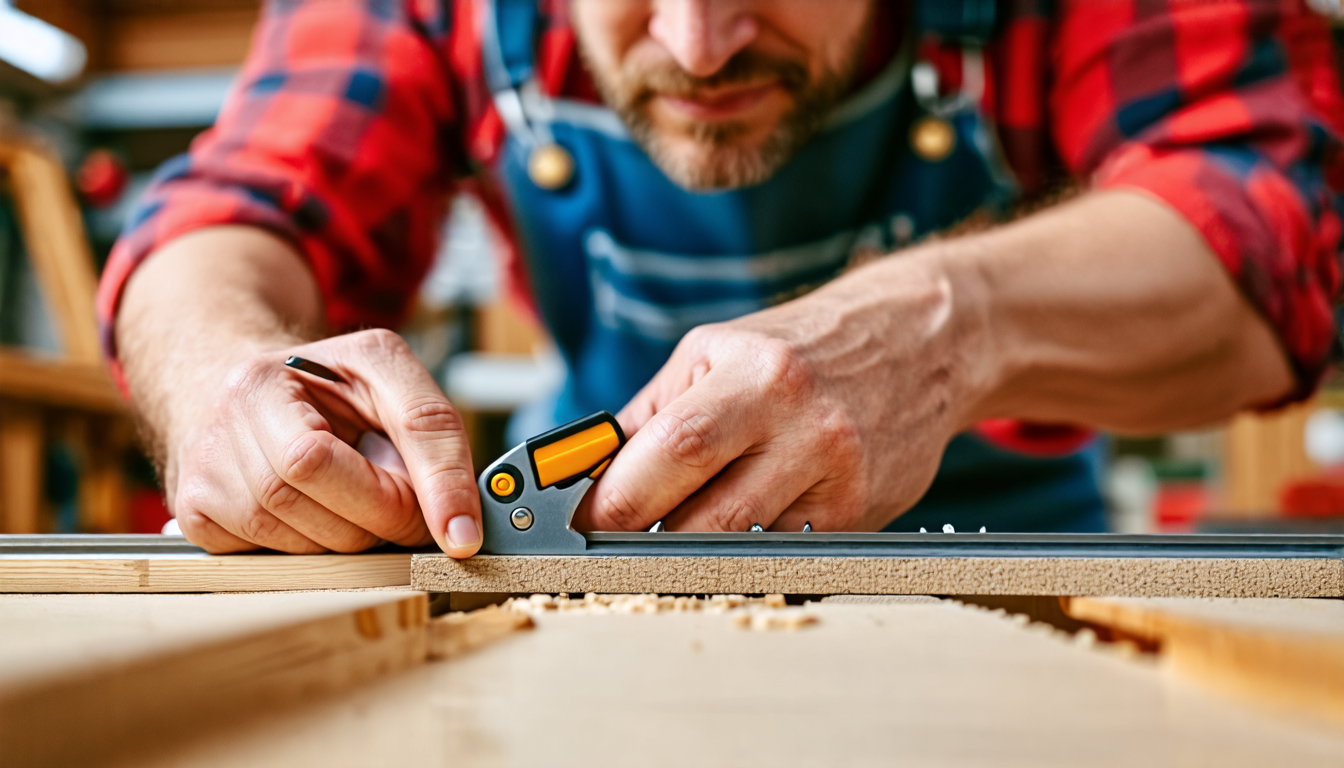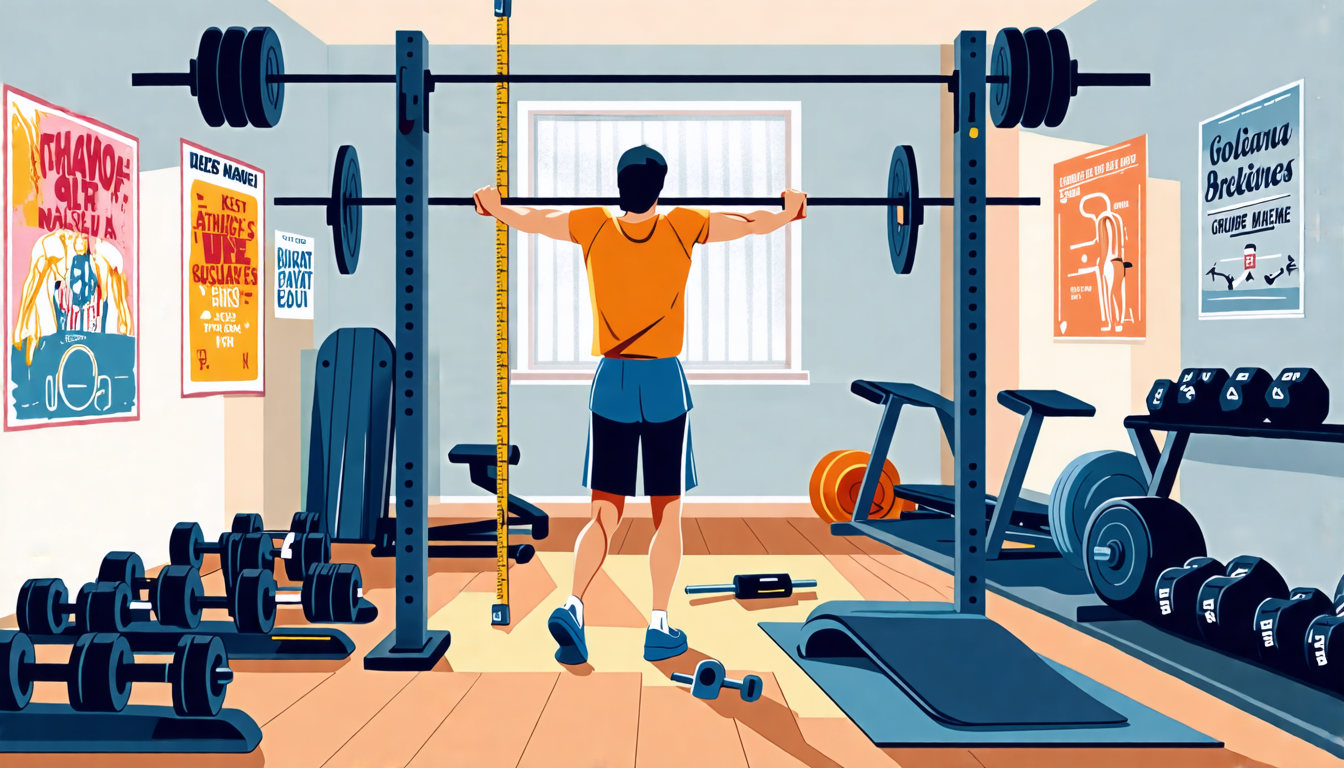Transforming a space in your home into a functional fitness sanctuary can be a rewarding and convenient way to maintain your workout routine. One essential component for a versatile home gym setup is a fitness bar, also known as a pull-up or chin-up bar. Installing a fitness bar not only enhances your exercise options but also maximizes the use of vertical space, making it an excellent addition for strength training enthusiasts. In this comprehensive guide, we will walk you through the process of installing a fitness bar in your home gym. From selecting the optimal location to ensuring the bar is secure and stable, we’ve got you covered with practical steps and safety tips. Whether you’re a DIY novice or an experienced handyman, this article will equip you with the knowledge and confidence to install your fitness bar effectively and safely.
Step-by-Step Guide to Installing a Fitness Bar in Your Home Gym
Choosing the Right Location for Your Fitness Bar
Before diving into the actual installation, selecting an ideal location for your fitness bar is crucial. Look for a spot in your home gym where the ceiling height and wall integrity can support the fitness bar. Consider the type of exercises you will be performing and ensure there is ample space for movement. Areas with reinforced walls or studs are preferable for wall-mounted bars, while sturdy ceiling beams are essential for ceiling-mounted options.
Gathering Necessary Tools and Materials
Having the right tools and materials on hand is essential for a smooth installation process. Here is a list of the tools and materials you will typically need:
- Fitness bar kit (includes mounting brackets and screws)
- Electric drill
- Drill bits (choose the correct size for your screws)
- Level
- Stud finder
- Measuring tape
- Pencil or marker
- Wrench or screwdriver (depending on your mounting hardware)
- Safety goggles and gloves
Ensure that all components of your fitness bar kit are present before you begin the installation process to avoid interruptions.
Measuring and Marking Holes for Mounting
Accurate measurements and markings are essential for a successful installation. Start by using a stud finder to locate the studs in the wall or ceiling where you plan to mount your fitness bar. Mark the center of each stud with a pencil or marker. This will ensure that your fitness bar is securely anchored.
Next, hold the fitness bar bracket up to the marked locations and use a level to ensure it is straight. Once the bracket is level, mark the holes where you will be drilling. Double-check the distance between the holes according to the fitness bar’s specifications to avoid misalignment.
Drilling and Securing the Fitness Bar
With the markings in place, it’s time to drill the holes. Put on your safety goggles and gloves before you begin drilling. Select the appropriate drill bit size for your screws and proceed to drill holes at the marked spots. If you’re drilling into a wall with studs, make sure your drill bit is suitable for tough wood. For ceiling installation, ensure the bit can handle the material type, typically wood or metal.
After drilling the holes, position the fitness bar bracket onto the drilled holes and align it properly. Insert the screws through the bracket’s holes into the drilled spaces. Use a drill or screwdriver to tighten the screws securely, ensuring the bracket is fixed firmly in place. Repeat this process for all mounting points.
Once the brackets are securely mounted, attach the fitness bar according to the manufacturer’s instructions. This may involve sliding the bar into the brackets or connecting it with additional hardware. Make sure all connections are tight and secure to prevent any movement during exercises.
Your fitness bar should now be securely installed and ready for use. However, before you start your workout, it’s important to ensure everything is safe and stable. This will be discussed in the next section of our guide. By following these steps, you’ll have a reliable fitness bar installed in your home gym, ready to support your fitness journey.

Essential Tips for Ensuring Safety and Stability
Double-Checking Measurements and Alignments
After the initial installation steps of your fitness bar, it’s crucial to double-check the measurements and alignments to ensure safety and stability. Use a level to verify that the bar is horizontally even. Even a slight tilt can cause uneven weight distribution, which not only impacts your workout efficiency but can also be a safety hazard. If you spot any discrepancy, adjust the bar accordingly before proceeding further.
Recheck the placement of drilled holes against the actual dimensions of the fitness bar. Accurate measurements ensure that the mounting brackets line up precisely with the bar, minimizing the risk of it wobbling or coming loose when in use. Remember that the exactness of these measurements is crucial for maintaining the integrity of the fitness bar’s installation.
Testing the Bar’s Stability Before Use
Before you start incorporating the fitness bar into your workout routine, give it a thorough test. Apply some pressure to various parts of the bar to ensure it is securely fastened. It’s advisable to start with gentle pulls and gradually increase the force to simulate actual workout conditions.
You can also hang lightly from the bar doing a mini swing to test its stability. If you notice any wobbling or hear creaking sounds, it might indicate loose screws or an imbalance. In such cases, tightening the screws or redoing the alignment may be necessary. Testing the bar’s stability is a non-negotiable step to prevent accidents during your exercise routines.
Maintenance and Regular Inspections
Regular maintenance and inspections are key to ensuring the long-term safety and stability of your home fitness bar. Over time, screws and bolts can loosen due to repeated usage. It’s a good practice to inspect the fitness bar at least once a month. Tighten any loose screws and check the overall condition of the bar and mounting hardware.
Also, be on the lookout for signs of wear and tear, such as rust or metal fatigue, particularly if your home gym is in a less climate-controlled area like a garage or basement. Rust can compromise the metal’s integrity, making the bar unsafe for use. If you spot any such issues, take immediate steps to address them by either treating the rust or replacing the compromised parts.
In addition to the physical inspection, periodically check the walls and support structures where the fitness bar is mounted. Look for any signs of stress such as cracks or weakened spots. Addressing these issues early can prevent larger structural problems and maintain a safe workout environment.
Installing a fitness bar in your home gym can be a rewarding project that provides numerous benefits for your workout routine. By following a methodical approach, from choosing the right location and gathering necessary tools to measuring, drilling, and securing the bar, you can ensure that your fitness bar is both functional and safe. Taking the time to double-check measurements and alignments, and testing the bar’s stability before use, are crucial steps in ensuring your setup is reliable. Additionally, regular maintenance and inspections will help prolong the life of your installation and maintain its safety.
In the broader context of home fitness, having a well-installed fitness bar can greatly enhance your exercise options, offering a versatile apparatus for a range of workouts, including pull-ups, chin-ups, and various hanging leg raises. By following the outlined steps meticulously and adhering to safety precautions, you create a solid foundation for your fitness endeavors. Ultimately, the effort put into properly installing and maintaining your fitness bar strengthens not just your physical setup, but also your commitment to a healthier lifestyle, right within the convenience of your home gym.

